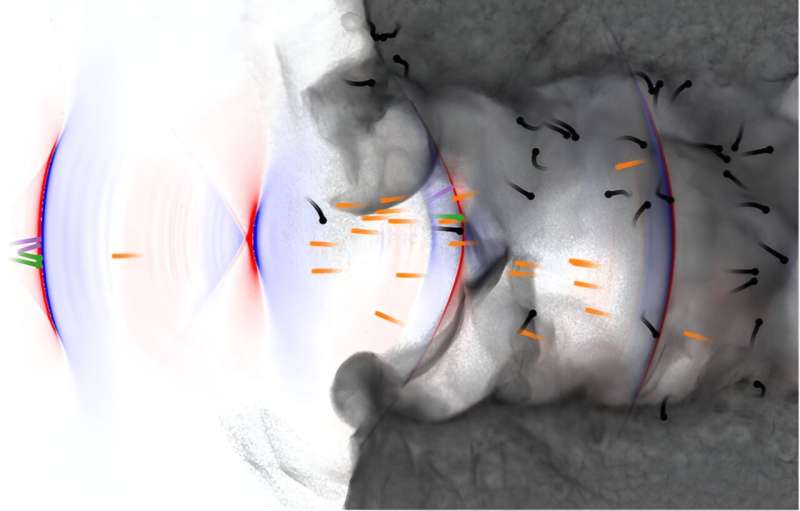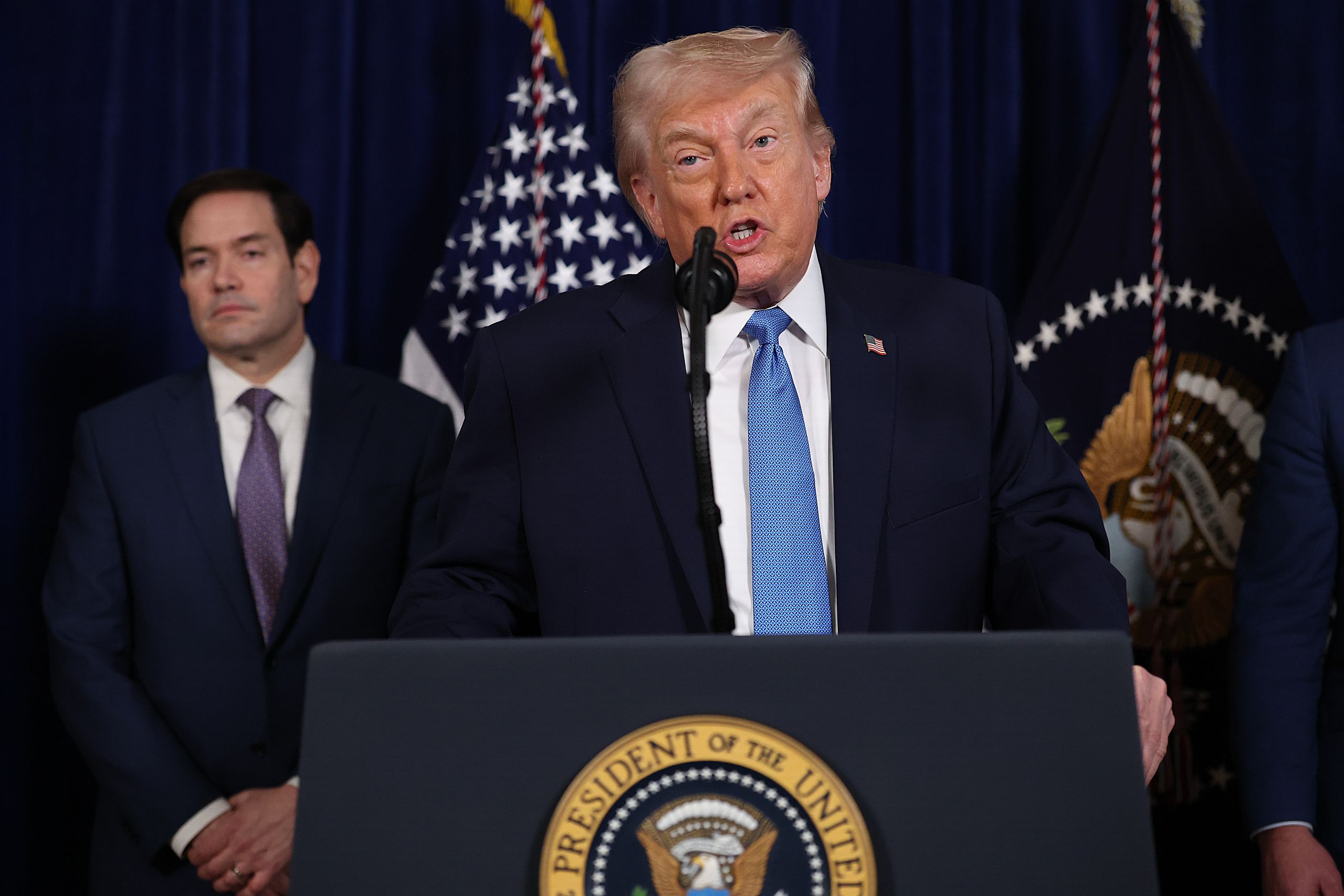The Interaction of Light with Matter at Intense Levels near the Schwinger Limit

June 10, 2024 feature
This article has undergone a rigorous review in accordance with the editorial process and rules of Science X. In ensuring the content's credibility, editors have highlighted the following factors:
- fact-checked
- peer-reviewed publication
- trusted source
- proofread
By Ingrid Fadelli, Phys.org
Advanced experimental generation of increasingly potent light beams could reveal new physics states in the presence of high intensity electromagnetic fields. While there have been strides in this area, physicists have not yet come up with a dependable strategy for achieving extremely light intensities.
Scientists at LIDYL, CEA, CNRS, and Université Paris-Saclay have recently put forward a feasible method to achieve unmatched light intensities in experimental setups, using densely concentrated doppler-boosted lasers. This method, detailed in a paper published in Physical Review Letters, is theoretically expected to allow light-matter interactions near the Schwinger limit.
'This paper builds on an idea that first emerged within our team at France's Alternative Energies and Atomic Energy Commission (CEA-LIDYL) in 2019 and has been intensely examined since then in collaboration with the Lawrence Berkeley National Laboratory (specifically with respect to the modeling aspects),' the paper's co-authors, Henri Vincenti and Neil Zaim, explained to Phys.org.
In this partnership, they are developing a novel technique to generate a light source with unmatched intensity, while also investigating how such a light source could be used to probe the strong field regime of quantum electrodynamics (SF-QED).
Quantum electrodynamics (QED), a relativistic quantum theory, is one of the most precisely tested physical theories. However, its strong-field regime still remains largely untouched due to difficulties in experimentally exploring it.
Vincenti and Zaim explained that the SF-QED theory has been around for decades and it predicts the emergence of new physics states in the presence of very potent electromagnetic fields. These hypothetical strong-field regimes are believed to occur near large astrophysical entities, like black holes, neutron stars, or during extreme astrophysical events like gamma-ray bursts.
Unfortunately, actual reproduction of these SF-QED-dominated regimes in experimental settings has remained elusive. The few attempts made have relied on large-scale particle accelerators, with only a few SF-QED processes detected.
Vincenti, Zaim, and their collaborators are optimistic that their suggested method for generating high-intensity light will reveal new research opportunities. In particular, it could allow physicists to approach the so-called Schwinger limit experimentally.
As documented in their 2019 publication, they tested the viability of their light-boosting technique using state-of-the-art numerical simulations. Their simulations suggested this method could multiply the intensity of a PW laser by 2 to 5 powers of ten, potentially bringing the 1025-1028 W/cm2 intensity range within the boundaries of current laser technology.
In addition to this, further numerical simulations published in 2021 indicated that even at its proposed minimum intensity of ~1025 W/cm2, the intensified light should be sufficient to trigger substantially more SF-QED phenomena than those probed by a conventional PW laser.
Researchers Vincenti and Zaim highlighted that the possibility of new SF-QED experiments in future, although the Schwinger limit is yet to be attained in lab settings; it can only be surpassed in the rest frame consisting of high-energy particles currently.
Although the team had numerically simulated variations to back up their approach theoretically, its capability to reach the Schwinger limit in lab conditions had not been analysed yet.
Exploring the physical scenarios resulting from achieving high intensities by using their light-boosting technique was the aim of this new study, according to Vincenti and Zaim. They added that the findings would be crucial for the next SF-QED experiments' planning, defining, and preparation.
Vincenti and his team used a method where a PW laser interacts with a flat solid object, changing into plasma, to produce unprecedented light intensity. They suggested striking an optically polished solid object using a highly intense laser beam, forming a plasma mirror.
This plasma mirror not only reflects incident light but also moves due to the laser's powerful field, causing the incident laser pulse to be compressed briefly and is then turned into a shorter wavelength via the Doppler effect. The laser's radiation pressure lends the plasma mirror a natural curvature, focusing the Doppler-boosted beam onto smaller areas and theoretically yielding intensity gains over three orders of magnitude within these areas.
To approach the Schwinger limit, the ability to sharply focus the light down to its smallest volume is essential, say Vincenti and Zaim.
They are presently investigating means to achieve this high degree of focus in experiments, such as employing external Extreme Ultraviolet refocusing optics, with upcoming studies focusing on these promising methods.
In their recent research, Vincenti and Zaim refrained from assuming a specific method to tightly focus Doppler-boosted light, enabling them to consider various possibilities in their numerically simulated models. They merely considered the light could be brought down to its smallest volume.
Vincenti and Zaim stated their research's exciting findings revealed that closing in on the Schwinger limit in a laboratory setting instigates new light-matter interaction scenarios. The mere encounter of their boosted light with a solid object led to numerous SF-QED events that dictate the physics.
The researchers' numerical simulations revealed the creation of dense fireballs moving at light speed, generated from the gamma photons and electron-positron pairs, which last only 1fs. These fireballs possibly mimic electron/positron jets near black holes and neutron stars, potentially revealing the radiation's origin.
The most extreme intensities led to radical physics, including chain reactions of particle creation, according to Vincenti and Zaim.
The researchers theorised that the collision of Doppler-boosted light with an electron beam from a particle accelerator could lead to interesting outcomes. However, we currently have no knowledge of what would occur in such an experiment, say Vincenti and Zaim.
'This lack of theoretical framework is likely both due to the mathematical complexity of nonperturbative quantum field theory and to the fact that researchers thought for many years that it would be impossible to reach such high electric fields in the rest frame of an electron. Our guess is that these kinds of results will further revive the interest in the nonperturbative regime of SF-QED and spur the development of new theoretical or numerical frameworks better suited to this regime.'
The results gathered by the researchers so far suggest that performing experiments close to the Schwinger limit would yield exciting new results that could greatly contribute to the fields of plasma physics and QED. In their next studies, they plan to start applying their proposed method in real experiments, in collaboration with major laser facilities worldwide.
'The main challenge that we anticipate is to actually produce the highest possible light intensities (up to 1028 W/cm2) in a real-world environment with experimental imperfections (both laser and targetry) and limited beam time,' Vincenti and Zaim said. 'Identifying and mitigating the hurdles that lie ahead will require the combination of theoretical, numerical and experimental expertise.'
The researchers forecast that in the first experiments, they will be able to create boosted light with intensities around 1025 W/cm2. While these intensities would still be far from the Schwinger limit, they would still be a world record, paving the way for high-impact SF-QED experiments that have never been performed before.
'We would then take advantage of the feedback from previous experiments and of future progress in laser technology to increase gradually the boosted light intensity from here up to the Schwinger limit,' Vincenti and Zaim added. 'This will allow us to obtain more and more spectacular SF-QED dominated interactions. We are therefore convinced that there are exciting times ahead.'
Journal information: Nature Physics , Physical Review Letters , arXiv
© 2024 Science X Network




